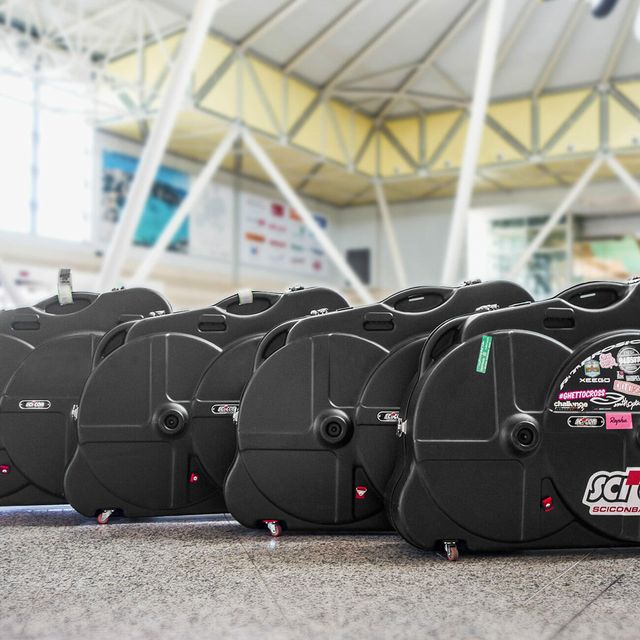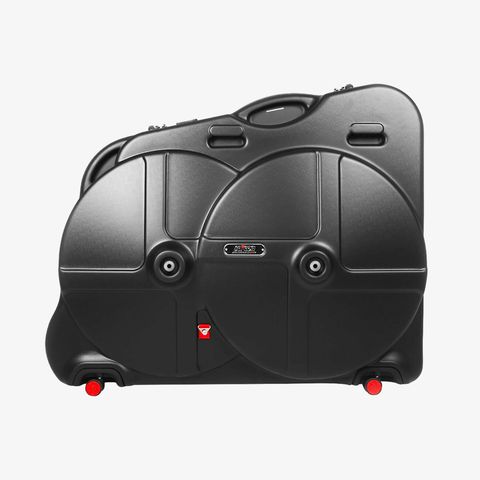You did it: you committed to your pedal-spinning hobby and bought a bike. Whether it’s a road bike, a mountain bike or something in between, it likely cost a pretty penny. At first, you might coddle it, treat it like a fragile display item instead of a thing used for transportation, ride it delicately, refer to it with a human pronoun. That’ll wear off, and then you’ll want to take it everywhere, including across the country or overseas.
You won’t be alone. Gravel riding, an adventurous type of biking that’s characterized by riding long distances on a mix of paved and unpaved roads, is currently growing faster than any other segment in the bike industry. Pro racing teams, most notably Education First, are even adopting “alternate” race schedules that include contests like the Dirty Kanza, a 200-mile trial on rough Kansas back roads.
Gravel riding and bikepacking (a self-supported blend of distance riding and camping similar to backpacking) lend themselves to travel. But distance isn’t a precursor to adventure by bike; making any lengthy journey, whether it be to roads topped with dirt or pavement, has value in itself. The only obstacle: getting your ride to your final destination, and there’s more than one way to go about it.
Cost of Flying with a Bike
Many airlines like Delta, American Airlines, United and Southwest classify bike bags as regular luggage, with those size and weight restrictions applied, typically 50 pounds and a combined length plus width plus height of 62 inches. If your bag doesn’t meet these requirements, you could end up paying as much as $200 in fees.
Others airlines don’t offer that regular luggage classification (Air France, Lufthansa, Air Canada are a few) and they might have policies that require you to call ahead to let them know you’re flying with a bike. When in doubt, call your airline as soon as you book tickets to find out what the rules are.
Ship Your Bike
There’s an alternative to checking your bike aboard a plane: ship it instead. The costs associated with this method can often be less than the airline fees if you can’t meet the requirements of their checked bag policies, and you can usually get away with using the same hard case or bag that you’d bring on a plane.
You can also contact your local bike shop and see if they’d be willing to mail your bike to your destination or to a bike shop nearby, which could run you roughly $50, depending on the shop. For an additional charge, many shops will take apart and pack your bike into a box, and a receiving shop can have it rebuilt before you arrive. Bike shops always have boxes lying around, so you can save money on buying a bag this way too.
How to Pack Your Bike
Bike bags come in two types: hard or soft. Hard cases offer serious protection but they’re heavier, so they might constrain your packing if you’re trying to stay below an airline’s limit. Soft cases are lighter but not as protective. Both types usually have wheels as well as an internal system of padding and organization to make packing easy. The bag you purchase will guide the process, but here are some general things to remember:
Take apart your bike. Not completely, but depending on the bag, you’ll likely need to take off your pedals, wheels and handlebars.
Deflate your tires. Check with your airline for rules here, and leave a little in there to protect the rims. You may also need to deflate your suspension.
Remove the rear derailleur. Affix it inside of the chainstays (the two tubes that extend back from the pedals to the rear axle) with a zip tie or other fastener.
Wrap your chain. Use a rag or something else to prevent an oily mess.
Best Bike Bags
Best Hard Case: SciCon Aerotech Evolution X TSA Case
SciCon’s hard case uses an ABS composite to provide a high level of protection while keeping a low weight (24 pounds).
Affordable Hard Case: Thule Round Trip Transition Bike Travel Case
The Thule Round Trip Transition Bike Travel Case uses a top-loading construction. That sounds inconvenient until you see the included bike stand, which makes taking apart a bike for packing (and reassembling at the destination) a much easier task.
Best Soft Case: Db Equipment Savage Bike Bag
The Savage is a softshell bag with a race car-inspired “roll cage” built-in. It’s made of aluminum and offers protection from all angles as well as anchor points for a series of straps that are used to keep the bike stable and in-place.
Affordable Soft Case: Evoc Bike Travel Bag
Often listed as one of the best soft bags for flying with a bike, Evoc’s Bike Travel Bag is one of the most affordable options but still provides compartmentalized storage and a system of internal straps and padding keep your ride secure and protected.
Note: Purchasing products through our links may earn us a portion of the sale, which supports our editorial team’s mission. Learn more here.





















